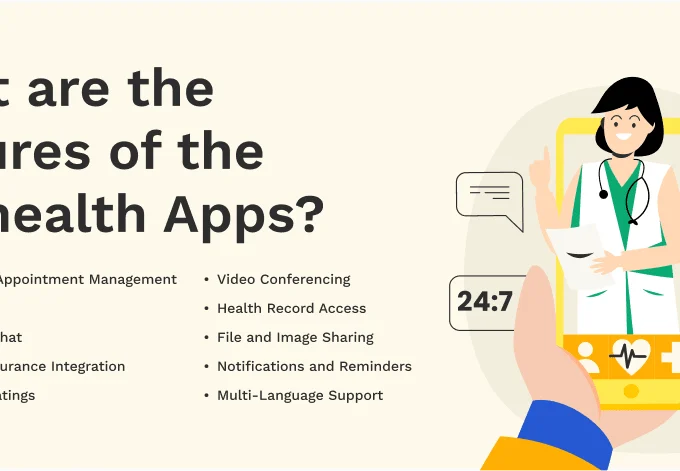Healthcare is changing rapidly, one advancement being the emergence of Virtual Medical Assistants (VMAs). Many healthcare professionals are recognizing the advantages of incorporating VMAs into their practices. This article delves into VMAs’ benefits to healthcare providers, focusing on time and cost savings, patient satisfaction, and overall efficiency.
The Increasing Significance of Virtual Medical Assistants
In today’s fast-paced healthcare landscape, a Virtual Medical Assistant has become tools for medical facilities. They assist in managing duties, enabling healthcare providers to devote attention to patient care. VMAs streamline processes that traditionally require time and resources, from scheduling appointments to following up with patients.
Understanding Virtual Medical Assistants
VMAs are aids designed to handle administrative tasks within a healthcare environment. Unlike assistants, VMAs can operate 24/7, addressing patient inquiries and appointment requests. This feature makes them highly efficient and dependable.
The Necessity for VMAs in Contemporary Healthcare
The rising demand for healthcare services has placed a strain on providers. Administrative responsibilities, though crucial, often detract from healthcare functions. VMAs offer a solution by automating these tasks, freeing time for healthcare providers.
Benefits for Healthcare Providers
Incorporating Virtual Medical Assistants (VMAs) into healthcare practices brings advantages. These include saving time, cutting costs, enhancing satisfaction, and boosting the care team’s efficiency. All these benefits contribute to a patient-focused healthcare delivery system.
Time Savings Through Automation
A key advantage of VMAs is the time they free up. By automating tasks like scheduling and follow-ups, VMAs enable healthcare providers to allocate time to direct patient care.
Streamlining Patient Scheduling
Patient scheduling can involve juggling calendars and accommodating patient preferences. VMAs simplify this by providing automated scheduling options that efficiently manage appointments. This not only saves time but also minimizes scheduling errors.
Efficient Follow-ups
Follow-ups ensure patients maintain their health and adhere to treatment plans. VMAs can handle these through automated reminders and check-ins, ensuring patients stay connected with their care without input from healthcare staff.
Reducing Administrative Burden
duties can overwhelm healthcare providers, diverting attention from care. VMAs seamlessly manage these tasks, from organizing records to handling insurance claims, thus easing the load on healthcare providers.
Savings on Costs through Assistants
Apart from saving time, Virtual Medical Assistants (VMAs) can also reduce healthcare practices’ costs. By automating tasks, VMAs reduce staff needs and lower operational expenses.
Decrease in Labor Expenses
Recruiting and training personnel can be an endeavor. VMAs eliminate the need for a team by handling numerous tasks more efficiently and at a reduced cost. This decrease in labor expenses can benefit healthcare providers.
Cutback on Operational Expenditures
Costs, such as office supplies and utilities, can accumulate rapidly. VMAs function digitally, lessening the need for resources and related fees. This contributes to a healthcare operation.
Financial Influence of Efficiency
Efficiency directly impacts the performance of any healthcare facility. By streamlining operations and cutting overheads, VMAs contribute to making the practice financially sustainable, enabling healthcare providers to distribute resources.
Improving Patient Satisfaction
Patient satisfaction is a crucial measure for any healthcare provider. VMAs can enhance experiences by offering prompt responses and personalized attention.
Tailored Care Solutions
Patients value care that addresses their needs and concerns. VMAs can personalize interactions based on information, providing tailored responses and suggestions.
Personalizing care to meet needs boosts satisfaction and loyalty. Responding promptly to patient inquiries is crucial in today’s era. Virtual Medical Assistants (VMAs) can help ensure responses, reduce wait times, and enhance overall satisfaction by maintaining positive relationships with patients.
Engaging patients through reminders and check-ins helps them stay committed to treatment plans and follow-up appointments. This proactive approach supported by VMAs leads to health outcomes and increased patient contentment.
In addition to benefiting patients, VMAs also enhance the efficiency of healthcare teams by automating tasks. This allows healthcare providers and staff to focus on providing quality care rather than getting bogged down by duties.
By lightening the workload through support, VMAs help prevent burnout among healthcare providers. This shift in responsibilities contributes to a work environment that fosters productivity and well-being.
Facilitating communication among care team members is vital for coordinated care delivery. VMAs aid in streamlining communication processes, ensuring everyone is informed and on the same page for collaboration and enhanced patient results.
Improving Work Processes
Efficient healthcare delivery relies heavily on a structured workflow. Virtual Medical Assistants (VMAs) can streamline processes through automation, ensure operations, and ultimately enhance the overall efficiency of healthcare practices.
Real-Life Examples
Let’s explore real-life scenarios showcasing the advantages of incorporating VMAs into healthcare settings.
Saving Time and Money
Numerous healthcare facilities have experienced time and cost savings following the integration of VMAs. For instance, one clinic decreased its workload by 40%, enabling staff to dedicate attention to patient care. This not only boosted efficiency but also resulted in significant cost reductions.
Boosting Patient Satisfaction Rates
In another instance, a healthcare provider witnessed a 25% rise in patient satisfaction ratings after VMA implementation. Patients valued the responses—personalized attention they received, leading to heightened satisfaction levels and increased loyalty.
Enhancing Team Efficiency
A sizable medical group noted a 30% enhancement in care team productivity after embracing VMAs. By automating tasks, healthcare professionals could allocate time to direct patient care, ultimately improving health outcomes and heightening team morale.
Positive Influence on Revenue Generation
VMAs also play a role in augmenting revenue streams.One healthcare facility experienced a 15% rise in earnings after incorporating Virtual Medical Assistants (VMAs), leading to enhanced efficiency and increased patient retention rates. This highlights the advantages of utilizing VMAs within the healthcare sector.
Addressing Common Obstacles
Despite VMAs’ benefits, integrating them into a healthcare practice can be challenging. Recognizing and tackling these obstacles is essential for implementation.
Initial Setup and Training
The integration of VMAs necessitates an investment in setup and training. However, the long-term gains significantly outweigh these expenses. Providing staff training ensures the efficient use of VMAs.
Ensuring Data Protection
Data security is a concern in healthcare. To safeguard information, selecting VMAs that adhere to industry standards and regulations is crucial. Implementing security measures guarantees the confidentiality and integrity of data.
Managing Patient Expectations
Patients may have differing comfort levels with VMAs. Communicating the benefits and capabilities of VMAs to patients is vital. They offer reassurance and assistance to help manage expectations and promote acceptance of this technology.
Future Trends in Virtual Medical Assistants
Virtual Medical Assistants is continually evolving, with trends and innovations emerging daily.
Keeping current with these trends is essential for healthcare professionals to make informed decisions about incorporating VMAs into their practices.
Incorporating Health Monitoring Devices
Future VMAs might connect with health monitoring devices, providing real-time data and insights to healthcare providers. This seamless integration enhances patient care and enables proactive healthcare management.
Expansion of Services
VMAs are anticipated to broaden their service offerings and provide support for healthcare providers. From health assistance to disease management, VMAs’ capabilities are continuously expanding.
Enhanced Accessibility
Technological advancements are increasing the accessibility of VMAs to healthcare providers of all sizes. Smaller practices and clinics can now take advantage of the benefits offered by VMAs without requiring investments.
In Conclusion
DocVA Virtual Medical Assistants are revolutionizing healthcare by simplifying tasks, enhancing satisfaction, and improving care team efficiency. By incorporating VMAs into their practices, healthcare providers can dedicate attention to delivering top-notch patient care while experiencing time and cost savings.
If you’re prepared to modernize your healthcare practice, consider exploring the advantages of VMAs. The future of healthcare is here. It’s time to embrace it.
Contact our team today to learn more and receive guidance on integrating VMAs into your practice.
Let’s collaborate to improve your healthcare services and attain enhanced patient results.












Leave a comment